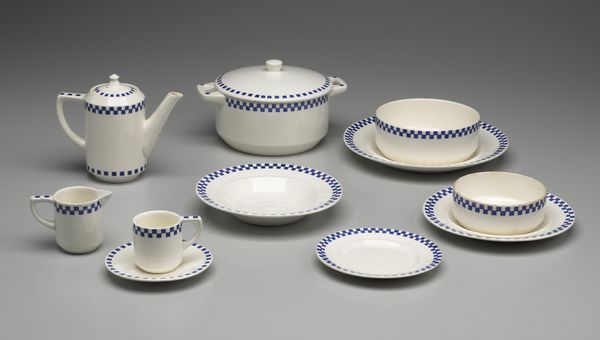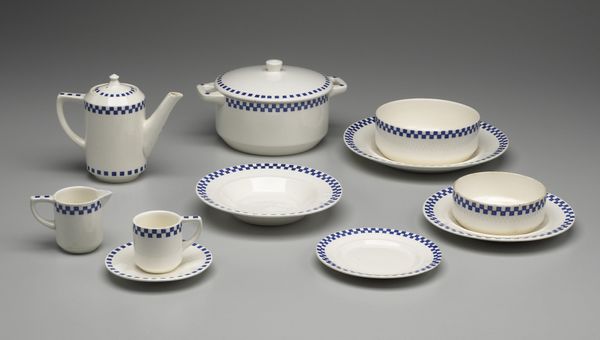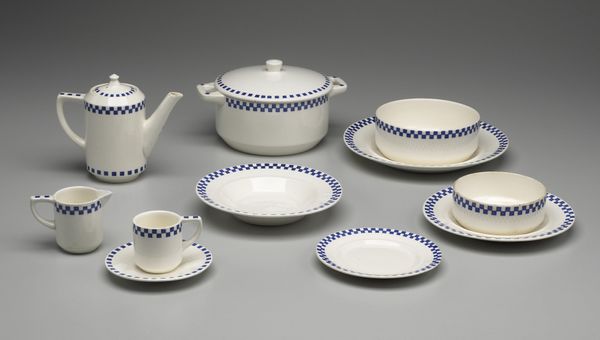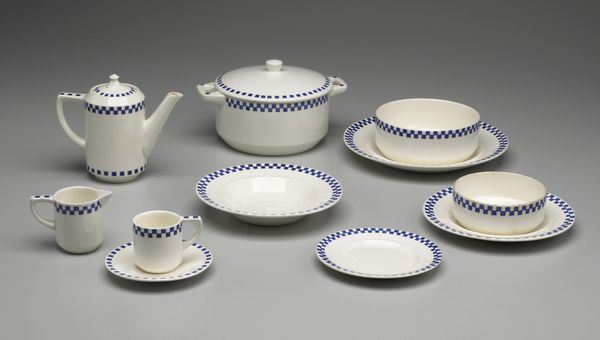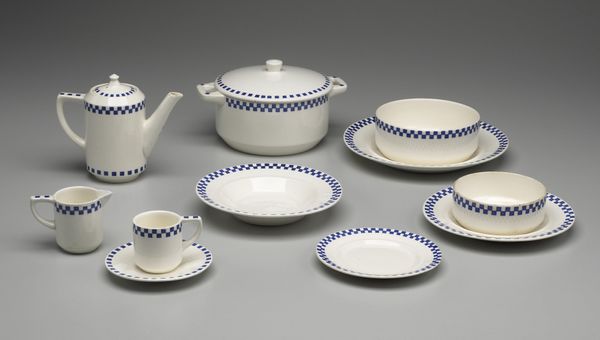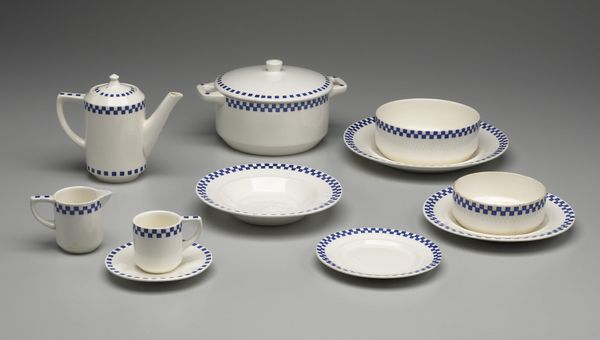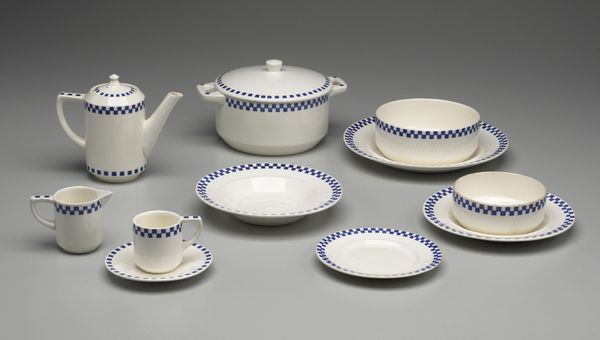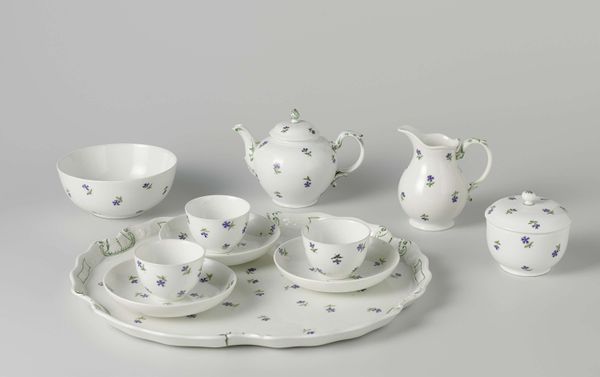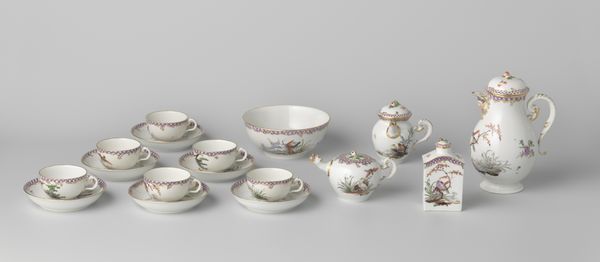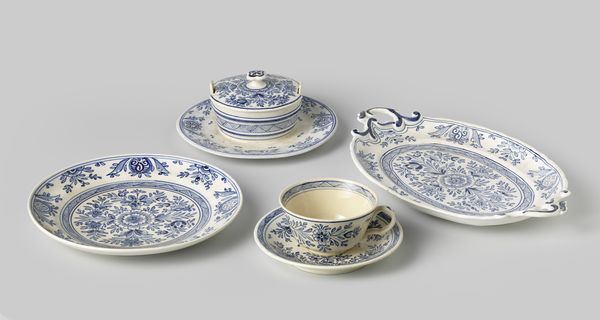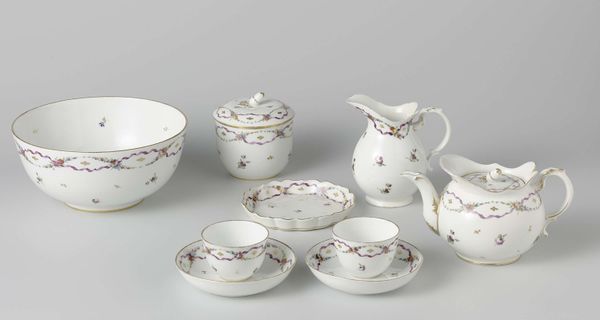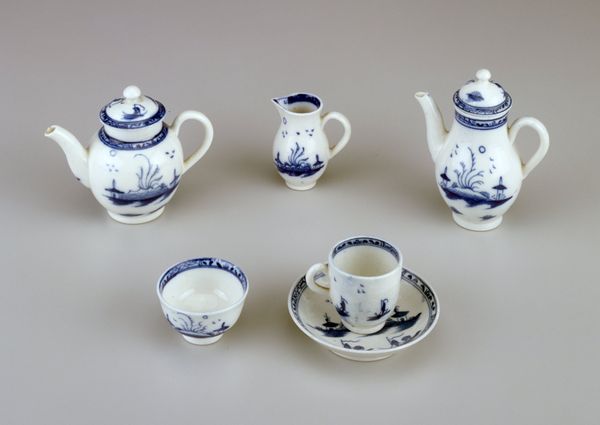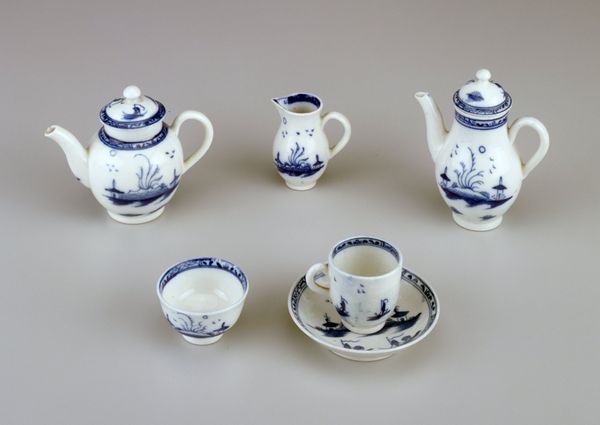
Cup and saucer c. 1924 - 1926
0:00
0:00
ceramic, earthenware
#
ceramic
#
earthenware
#
decorative-art
Dimensions: 2 x 3 7/8 in. (5.1 x 9.84 cm)
Copyright: Public Domain
Curator: This charming earthenware "Cup and Saucer," part of a larger set, comes to us from the Waechtersbach Earthenware Factory in Germany, dating from around 1924 to 1926. What’s your initial take on it? Editor: Well, immediately, I'm struck by its comforting simplicity. It feels incredibly domestic and grounded, a celebration of the everyday. The geometric checkerboard pattern creates such a reassuring sense of order. Curator: Indeed. The design reflects a specific historical yearning for order. After World War I, there was a powerful public appetite for functional yet pleasing domestic objects. The Bauhaus movement, with its focus on combining utility and beauty, heavily influenced the era’s design ethos and even manufacturers like Waechtersbach. Editor: And the checkerboard, that potent, repetitive symbol… is it about stability, a response to chaos, maybe? Chess, too, comes to mind – a controlled battle of intellect! The unwavering design gives a strange stoicism for such dainty dishware. Curator: An interesting interpretation! From my viewpoint, the implementation of this pattern was driven by consumer culture; manufacturers mass produced affordable homewares that could deliver this streamlined visual in any middle-class household. These kinds of ceramics became hugely popular; reflecting shifts in industrial and social organization. Editor: Yet, despite its mass-produced origin, there's a very individual feel. The variations in the brushstrokes, the subtle unevenness... they invite a connection. What were these ceramics supposed to *mean* in a post-war setting? Curator: It signifies hope, really, and accessibility. Homes rebuilt, lives resuming, affordable beauty for the masses… this earthenware encapsulates the values of reconstruction and social mobility after widespread hardship. The museum became a place that also supported industrial production in the community by collecting this ware as high design. Editor: And so, this modest cup and saucer set—vessels for our daily rituals—becomes a symbol of resilience, doesn’t it? We see more than just objects; we see society reforming itself, block by careful block. Curator: Exactly! It makes you consider what objects will come to symbolize our own age in the future. Editor: It certainly provides an unexpected perspective on the weight that symbols carry within familiar objects.
Comments
No comments
Be the first to comment and join the conversation on the ultimate creative platform.
